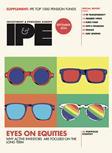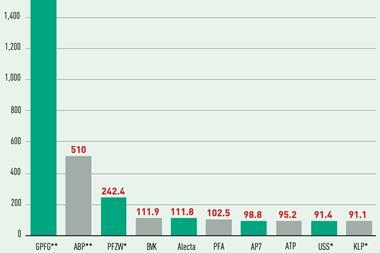The gloom at Germany’s Neuer Markt, generated mainly by the recent rash of postponed flotations, seems finally to be lifting. Recent trends suggest that the fantastic growth following the launch of the market in March 1997, and the dramatic correction that followed, could be over.
It has been a volatile year, with the Nemax index rocketing up to the verge of the 4,000 barrier in January growing by 46.5%, but slumping back to below 1998 levels after a fall to 2,669 in October. Apart from a brief rally in the summer, it has been almost continual bad news this year, but a steady recovery which began last month is a sign that the market for innovative, high growth – high risk stock is stabilising.
Jan Altman at the Frankfurt exchange is confident about the run to the year-end. “We still expect a significant number of IPOs before the end of the year, with the number of postponements which have been announced smaller than the number of new listings anticipated.” Nevertheless, there is little doubt that the companies that have chosen to postpone would have had little difficulty raising capital earlier in the year.
Indeed the Euro.NM, the pan-European network of exchanges for high-growth companies, expected 19 newcomers during October. Nine of those were on the Neuer Markt, with the others divided between Paris and Milan.
This would bring the total market capital, including the other participant Brussels, to over e60bn, and total capital raised through the e10bn ceiling. With close to 60% of the network’s listings and almost 90% of the total market capital, the Neuer Markt is the dominant player. The largest sector is media, with a 21% share of the sector weighting, with IT, telecoms and internet companies the other major players.
This steady flow of companies coming to the market should mean less dramatic share price fluctuations. Indeed, some analysts believe that the market has probably bottomed out. How well it recovers, dependent as it is to a large extent on retail investors, will only be seen next year as investor confidence returns.
Harold Borghoff at DG Bank in Frankfurt predicts a levelling off of the index. “Our latest figures suggest an index level of around the 3,200 mark by the end of the first quarter of 2,000.” This would suggest stock trading at or close to issue price. But he warns that investors will have to be even more selective if they are to outperform the market. “It is definitely a stock-picker’s market now,” he adds.
Borghoff believes, however, that the Neuer Markt has finally come of age, after the teething problems of the past couple of years. “It is likely that the recent volatility, and especially the massive leap prices enjoyed in January are a thing of the past.”
Other analysts are not so sure. Tomas Teetz, chief equity analyst at Trinkhaus in Frankfurt believes there are three underlying influences at work on the market, the US markets, European interest rates and the number of IPOs. “Continuing volatility is likely as we keep a weather eye on the US economy. That could in turn influence interest rates in the Euro-zone. This in itself will seriously damage the valuation models for the companies listed on the Neuer Markt,” he warns.
These valuations have already been hit by Teetz’s third worry, the number of companies coming to the market. Despite the postponements, we have seen a massive correction in values, with p/e ratios which were in the 80–90 range now appearing more realistic.
“The problem for investors is that with one or two IPOs every day, it is difficult to measure the market, or estimate when the bubble might burst. This has led to investors holding back. More and more they are looking for quality rather than too much risk.”
Analysing the market is a problem which Frankfurt
is well aware of, and some
practical steps may be in the pipeline, but the very nature of the Neuer Markt, and the companies it lists means the difficulty is unlikely to go away. As Borghoff points out, “There are 170 companies listed on the Neuer Markt, but only half of these are covered by analysts, and so it is difficult to calculate a p/e ratio for the total market. Furthermore, there are so many new issues that there are simply not enough analysts to go around!”
He is confident, however, that the correction of the past eight weeks is at an end. “The main reasons for the slump were over valuation and the massive primary market activity sparked by the number of IPOs. The latter continues to be a problem, but the over valuation crisis is at an end.” The only fear he has is that a correction in NASDAQ could produce fallout in Frankfurt. “Then we could see the index fall back to the 2,700 level or even fall through to 2,500. That however, is not our favoured scenario,” he affirmed.
Investors can expect to see more IPOs in the internet and biotechnology sectors, following a rash of IT issues in September. But bearing in mind that they will be looking for quality, and in the wake of a cooling off of interest in internet companies, only those showing good profit projections are likely to show early gains.
Borghoff feels that the media sector is overvalued still, despite the correction. “It performed well until the summer, but could not be recommended as a sector capable of outperformance now.” He believes that by way of contrast the special engineering sector could be the one to watch as the recovery continues across Euroland.
The question for investors is whether the market has really matured, and we have seen an end to wild fluctuations, or whether the liquidity crisis is merely causing a slowdown, heralding a burst of activity in the new year.












No comments yet